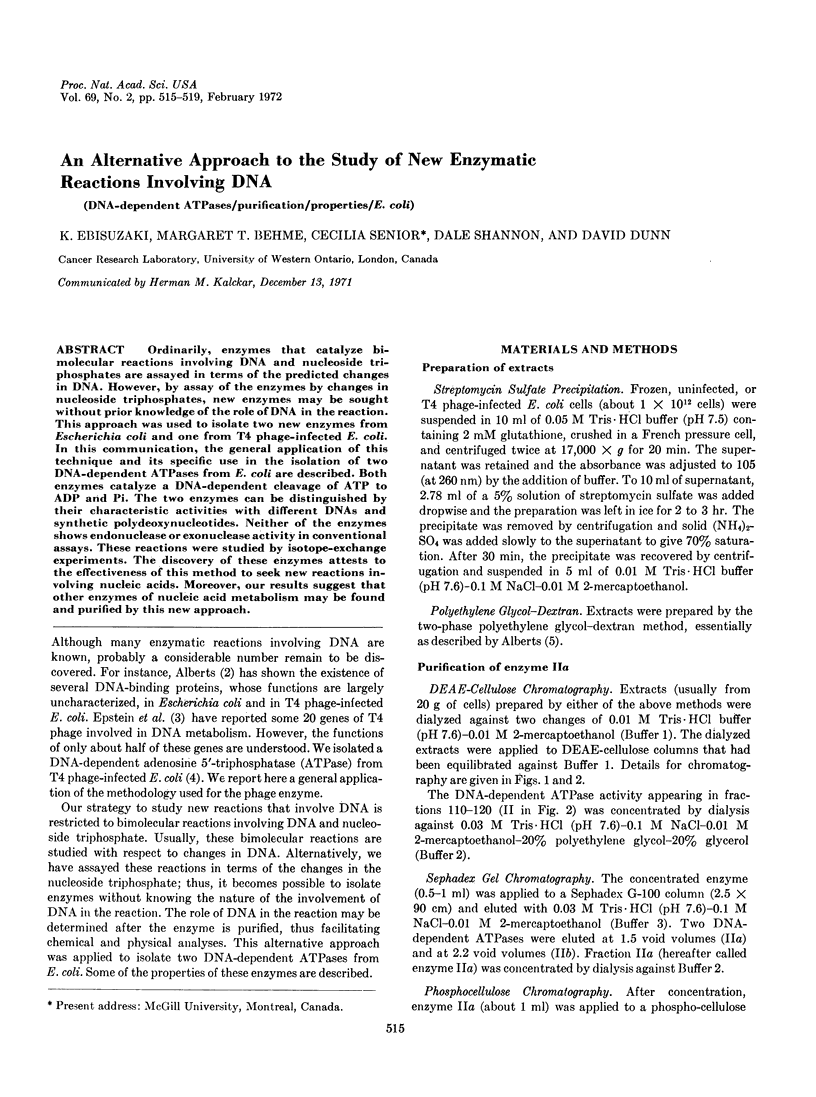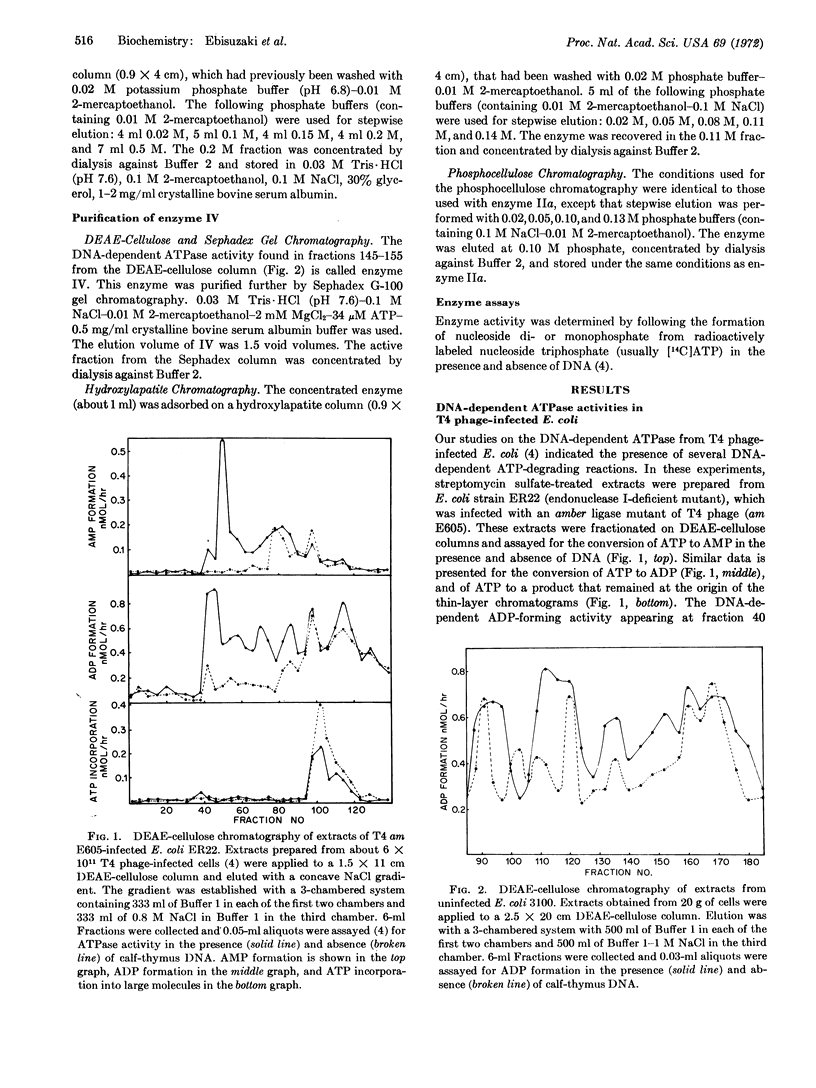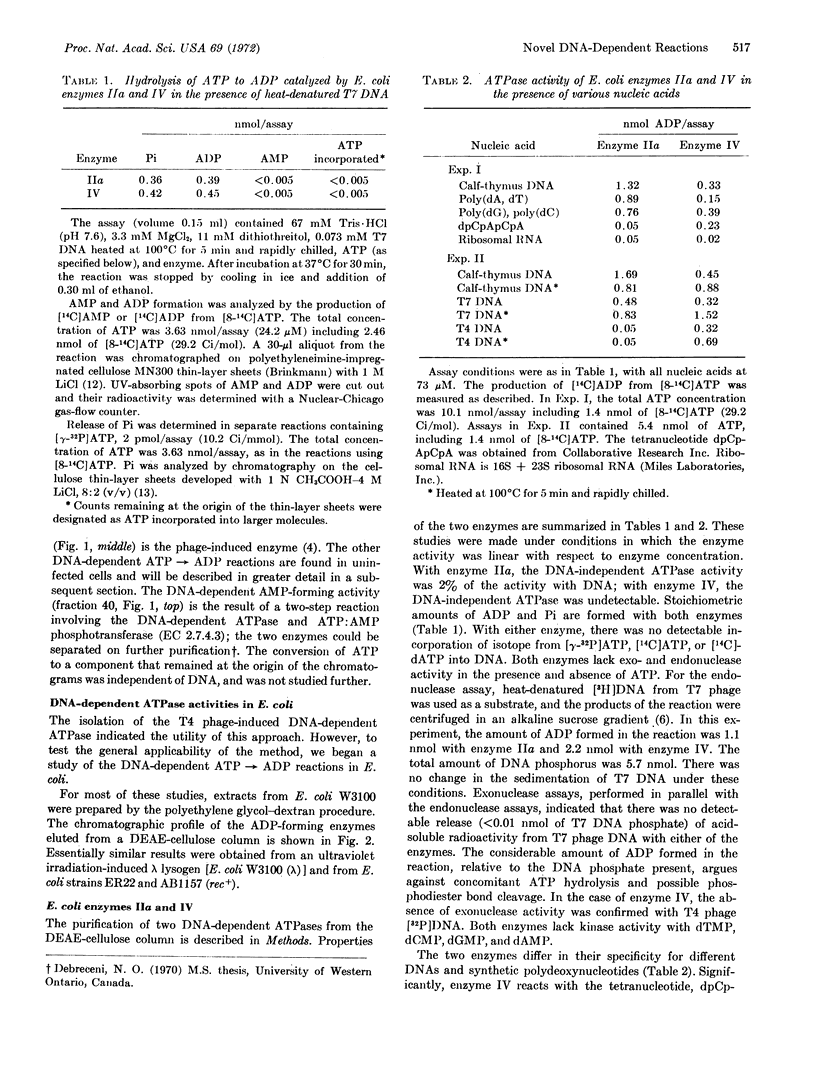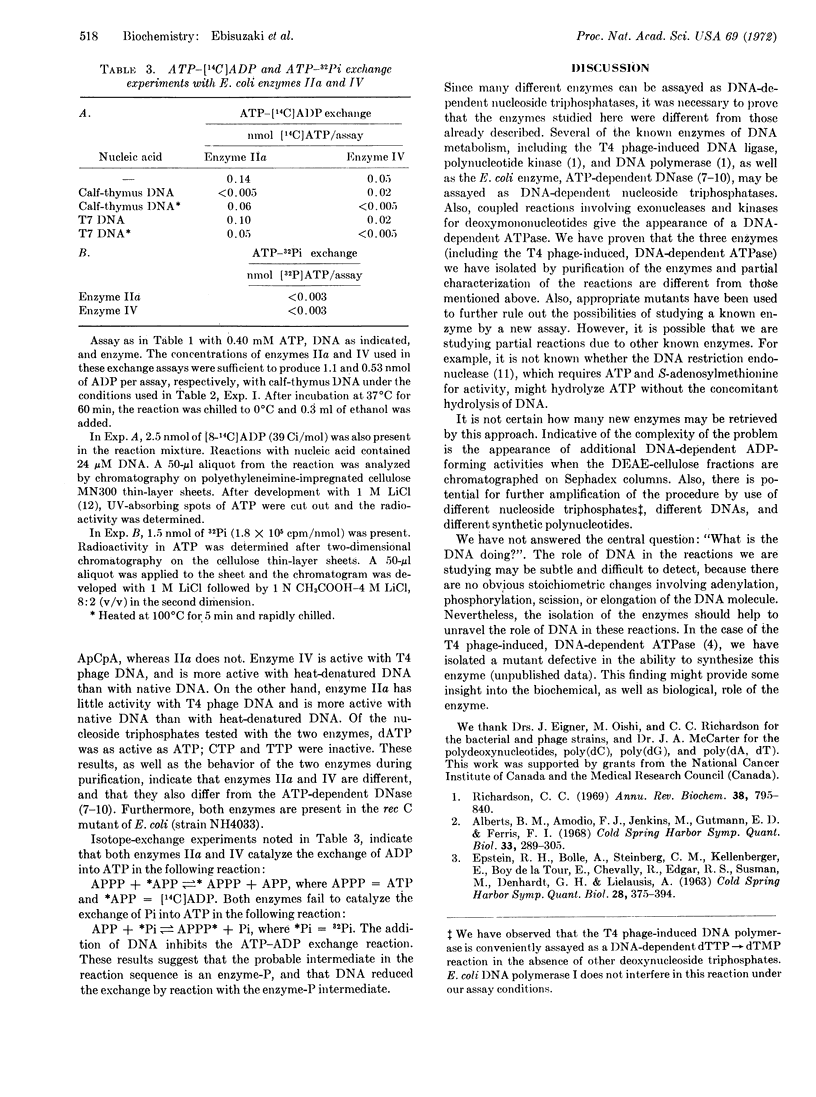Abstract
Ordinarily, enzymes that catalyze bimolecular reactions involving DNA and nucleoside triphosphates are assayed in terms of the predicted changes in DNA. However, by assay of the enzymes by changes in nucleoside triphosphates, new enzymes may be sought without prior knowledge of the role of DNA in the reaction. This approach was used to isolate two new enzymes from Escherichia coli and one from T4 phage-infected E. coli. In this communication, the general application of this technique and its specific use in the isolation of two DNA-dependent ATPases from E. coli are described. Both enzymes catalyze a DNA-dependent cleavage of ATP to ADP and Pi. The two enzymes can be distinguished by their characteristic activities with different DNAs and synthetic polydeoxynucleotides. Neither of the enzymes shows endonuclease or exonuclease activity in conventional assays. These reactions were studied by isotope-exchange experiments. The discovery of these enzymes attests to the effectiveness of this method to seek new reactions involving nucleic acids. Moreover, our results suggest that other enzymes of nucleic acid metabolism may be found and purified by this new approach.
Keywords: DNA-dependent ATPases, purification, properties, E. coli
Full text
PDF




Selected References
These references are in PubMed. This may not be the complete list of references from this article.
- Alberts B. M., Amodio F. J., Jenkins M., Gutmann E. D., Ferris F. L. Studies with DNA-cellulose chromatography. I. DNA-binding proteins from Escherichia coli. Cold Spring Harb Symp Quant Biol. 1968;33:289–305. doi: 10.1101/sqb.1968.033.01.033. [DOI] [PubMed] [Google Scholar]
- Buttin G., Wright M. Enzymatic DNA degradation in E. coli: its relationship to synthetic processes at the chromosome level. Cold Spring Harb Symp Quant Biol. 1968;33:259–269. doi: 10.1101/sqb.1968.033.01.030. [DOI] [PubMed] [Google Scholar]
- Debreceni N., Behme M. T., Ebisuzaki K. A DNA-dependent ATPase from E. coli infected with bacteriophaget4. Biochem Biophys Res Commun. 1970 Oct 9;41(1):115–121. doi: 10.1016/0006-291x(70)90476-6. [DOI] [PubMed] [Google Scholar]
- Goldmark P. J., Linn S. An endonuclease activity from Escherichia coli absent from certain rec- strains. Proc Natl Acad Sci U S A. 1970 Sep;67(1):434–441. doi: 10.1073/pnas.67.1.434. [DOI] [PMC free article] [PubMed] [Google Scholar]
- Meselson M., Yuan R. DNA restriction enzyme from E. coli. Nature. 1968 Mar 23;217(5134):1110–1114. doi: 10.1038/2171110a0. [DOI] [PubMed] [Google Scholar]
- Oishi M. An ATP-dependent deoxyribonuclease from Escherichia coli with a possible role in genetic recombination. Proc Natl Acad Sci U S A. 1969 Dec;64(4):1292–1299. doi: 10.1073/pnas.64.4.1292. [DOI] [PMC free article] [PubMed] [Google Scholar]
- RANDERATH K., RANDERATH E. ION-EXCHANGE CHROMATOGRAPHY OF NUCLEOTIDES ON POLY-(ETHYLENEIMINE)-CELLULOSE THIN LAYERS. J Chromatogr. 1964 Oct;16:111–125. doi: 10.1016/s0021-9673(01)82445-6. [DOI] [PubMed] [Google Scholar]
- Richardson C. C. Enzymes in DNA metabolism. Annu Rev Biochem. 1969;38:795–840. doi: 10.1146/annurev.bi.38.070169.004051. [DOI] [PubMed] [Google Scholar]
- Sadowski P. D., Hurwitz J. Enzymatic breakage of deoxyribonucleic acid. I. Purification and properties of endonuclease II from T4 phage-infected Escherichia coli. J Biol Chem. 1969 Nov 25;244(22):6182–6191. [PubMed] [Google Scholar]


